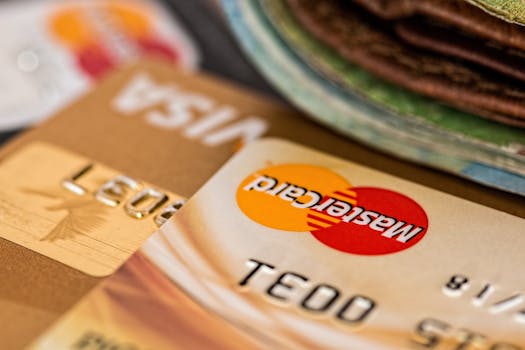
**
The payments industry giants, Visa and Mastercard, are facing a seismic shift. A $253 billion threat looms, not from a single competitor, but from a wave of innovative fintech companies disrupting the traditional payment processing landscape. This article delves into the strategies Visa and Mastercard are employing to combat this challenge, analyzing their investments, partnerships, and technological advancements in the face of growing competition from challenger banks, Buy Now Pay Later (BNPL) providers, and cryptocurrency payments.
The $253 Billion Threat: Disruption in the Payments Ecosystem
The $253 billion figure represents the estimated market value at risk for traditional payment processors. This isn't a sudden upheaval, but rather a culmination of several converging trends:
- Rise of Fintechs: Challenger banks and neobanks like Chime and Revolut are attracting millions of users with sleek interfaces and competitive fees, often bypassing traditional payment rails.
- Buy Now Pay Later (BNPL) Explosion: Services like Affirm, Klarna, and Afterpay are gaining immense popularity, offering consumers flexible payment options at the point of sale, creating a parallel payment ecosystem. This is driving significant innovation in the BNPL market share and impacting traditional credit card usage.
- Cryptocurrency Adoption: While still nascent, the adoption of cryptocurrencies as a payment method is steadily increasing. Bitcoin, Ethereum, and other altcoins present a potential challenge to established payment networks.
- Embedded Finance: The integration of financial services into non-financial applications is gaining traction. This trend enables businesses to offer financial products, including payment solutions, directly within their platforms, reducing reliance on traditional processors. This increased embedded finance adoption directly challenges Visa and Mastercard's dominance.
- Open Banking APIs: Open banking regulations are fostering competition by allowing third-party providers access to customer banking data, enabling the creation of innovative financial products and services. This surge in open banking APIs creates a more competitive landscape.
Visa's Strategic Response: Diversification and Innovation
Visa is taking a multi-pronged approach to address this threat, focusing on diversification and strategic partnerships:
- Expanding into New Payment Methods: Visa is actively exploring and investing in digital wallets, mobile payments, and contactless technologies to remain competitive. They are aggressively pursuing mobile payment solutions to cater to the growing mobile-first population.
- Strategic Acquisitions: Visa has engaged in a series of acquisitions to bolster its capabilities and expand its reach into new markets and segments. These acquisitions often focus on strengthening their payment processing technology and expanding their network.
- Strengthening its Network: Visa is continuously investing in upgrading its infrastructure to handle increasing transaction volumes and support new payment technologies. This involves substantial investment in payment gateway integration and enhancing security protocols.
- Focus on Data Analytics: Visa leverages its vast transactional data to provide valuable insights to its partners, allowing them to optimize their operations and better serve their customers. Their investment in data analytics enhances their payment data security and their understanding of market trends.
Mastercard's Counteroffensive: Partnerships and Technological Advancements
Mastercard is pursuing a strategy that emphasizes strategic partnerships and technological advancements:
- Building a Robust Ecosystem: Mastercard is focusing on forging partnerships with fintechs, merchants, and technology providers to expand its reach and offer a wider range of payment solutions. This strategy focuses on integrating its services into existing ecosystems, rather than attempting to create its own.
- Investment in Emerging Technologies: Mastercard is heavily investing in emerging technologies like blockchain, AI, and machine learning to enhance its security, improve fraud detection, and develop innovative payment solutions. Their investment in blockchain technology in payments positions them for the future.
- Focus on Security and Fraud Prevention: Given the increasing sophistication of cyber threats, Mastercard is prioritizing security and fraud prevention technologies. This includes investments in advanced fraud detection and AI-powered security measures.
- Expanding into B2B Payments: Mastercard is aggressively targeting the business-to-business (B2B) payment space, offering solutions tailored to the specific needs of corporate clients. This expansion into the B2B payment processing market ensures diversification beyond consumer payments.
The Future of Payments: A Dynamic Landscape
The battle between Visa, Mastercard, and the rising tide of fintechs is far from over. The future of the payments industry will be characterized by:
- Increased Competition: The market will become even more competitive as new fintechs emerge and existing players innovate.
- Technological Advancements: Emerging technologies like AI, blockchain, and biometrics will play a crucial role in shaping the future of payments.
- Regulatory Scrutiny: Regulators will continue to scrutinize the payments industry to ensure fairness, security, and consumer protection.
Both Visa and Mastercard are investing heavily in innovation and partnerships to maintain their dominance. However, the disruptive potential of fintechs is undeniable. The coming years will be critical in determining the long-term landscape of the payments industry, with the outcome likely shaped by the speed of innovation and the adaptability of the established players. The ongoing struggle for market share in the payments industry is a fascinating race to watch. The key will be staying ahead of the curve and embracing a future where seamless, secure, and diverse payment options are the norm.




















